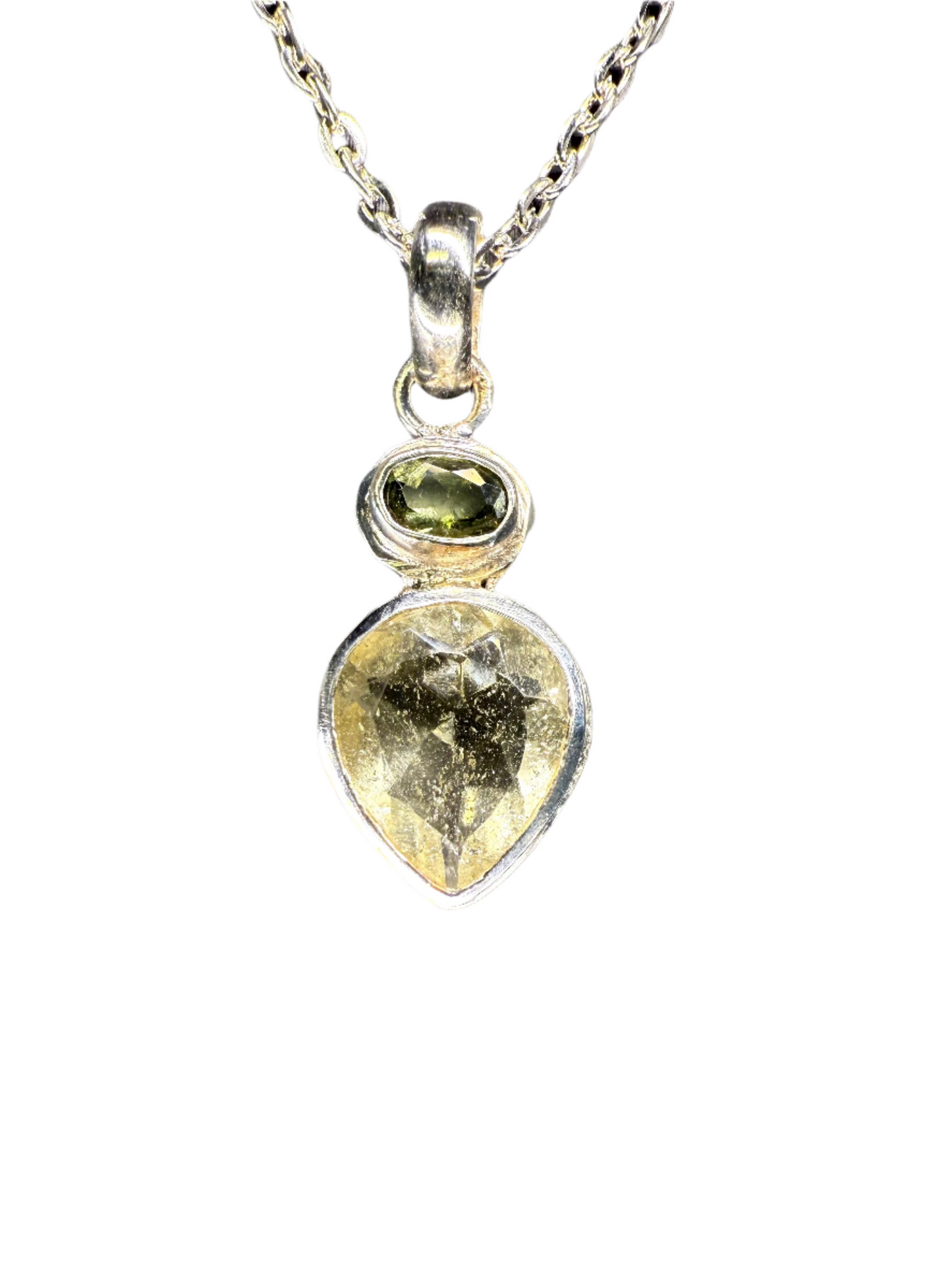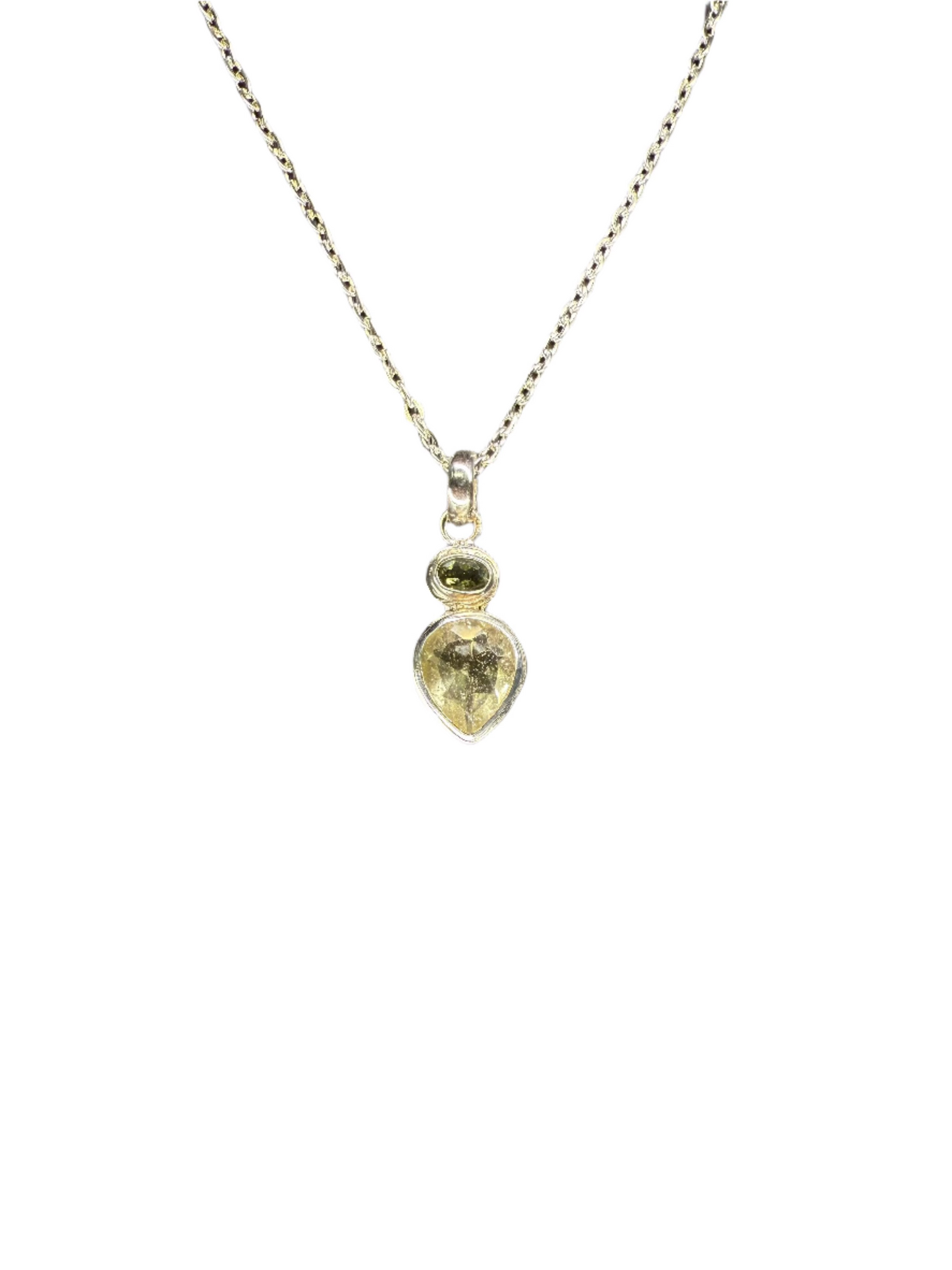This is a beautiful Faceted Libyan Desert Glass & Moldavite arrangement set into a .925 Sterling Silver Pendant.
Faceted Libyan Desert Glass & Moldavite Pendant | Egypt / Czech Republic
- .925 Sterling Silver Setting
- Silver Plate Chain Included
- Measures Approx. 1.25" H X 0.5" W. and 0.25 ounces
At Dreaming Peddler, we're committed to providing you with responsibly sourced material direct from sources in the Czech Republic. Explore our range of Moldavite jewelry, rough specimens, and master carvings, perfect for collectors and enthusiasts alike.
Moldavite is a rare, green-colored glass that is believed to have formed around 15 million years ago when a meteorite crashed into Earth, specifically in the Nördlinger Ries crater, located in the present-day Bohemian Plateau (modern-day Czech Republic, Germany, and Austria). The impact caused the local sandstone to melt, and the resulting molten material rapidly cooled, solidifying into what we now call Moldavite. The specific combination of heat and pressure altered the structure of the rock and led to the formation of the glassy-green substance. Its formation and ejection from the original impact site has led it to be classified as a tektite, along with other substances like Indochinite from East Asia, Libyan Desert Glass from the Sahara, and Bediasite from Texas.
Libyan Desert Glass (LDG) is another fascinating type of natural glass with a mysterious history, and it too has extraterrestrial connections, though its origins are somewhat different from that of Moldavite. Libyan Desert Glass is believed to have formed about 29 million years ago when a meteorite or comet exploded in the atmosphere over the Libyan and Egyptian deserts. The explosion, possibly caused by the impact or the friction of the meteorite as it entered the atmosphere, generated an enormous amount of heat and pressure, which caused the sand in the region to melt and quickly solidify into glass.
LDG is made of silica (like quartz), and it has a translucent, yellowish-green color. The glass often has a smooth, slightly bubbly texture. The creation of this glass is thought to be similar to that of other impact glasses, like moldavite, but it was formed not by a direct impact but by a large explosion in the sky.
*Price is per individual piece unless noted. Due to the natural variations of each piece, please note that the actual item you receive may not appear exactly as pictured. Rest assured, however, that our dedicated team will do their best to hand-select the most attractive specimen(s) that we have in stock at the time of your order. Sizes and weights are always approximate.














































